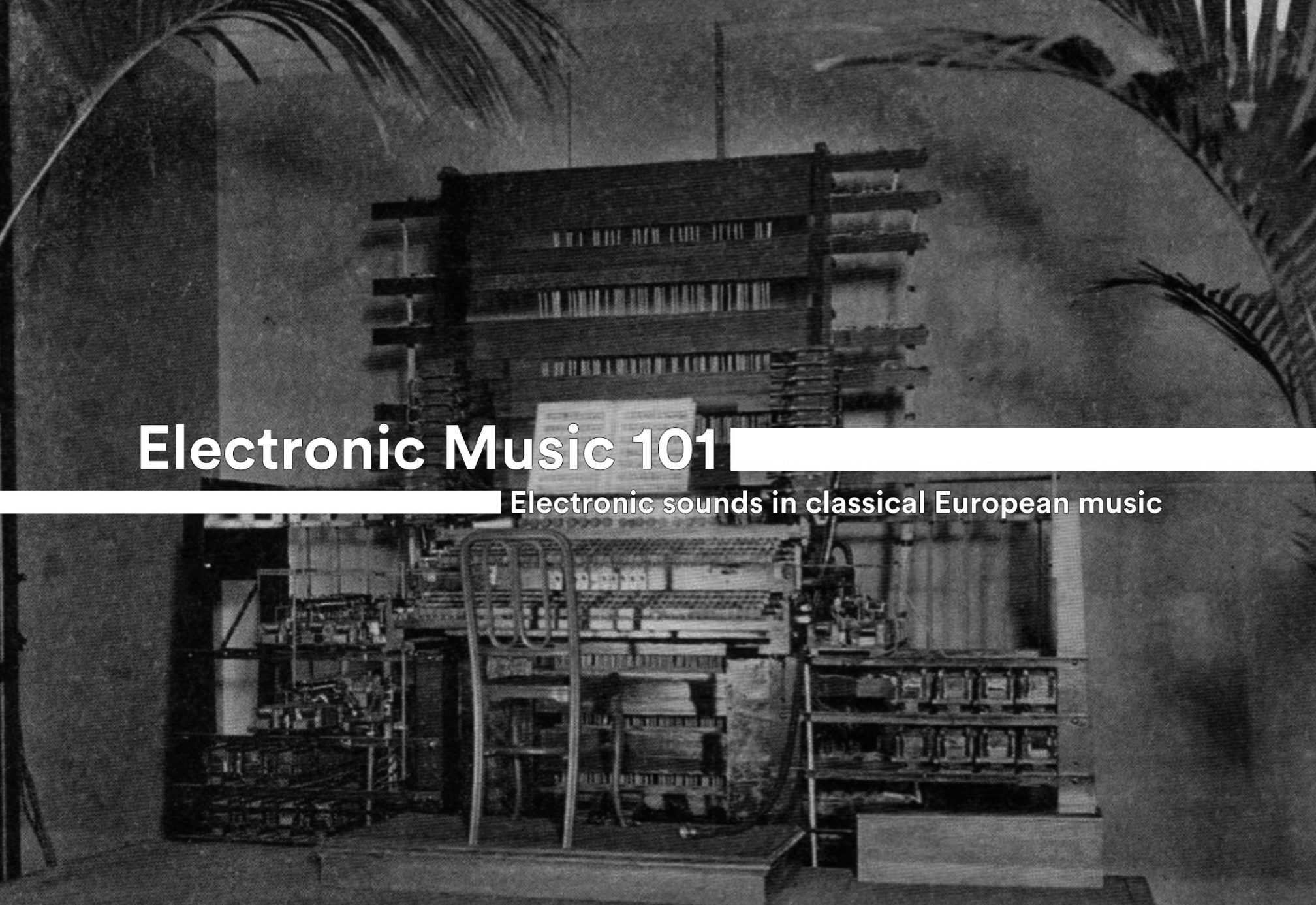 Features
Features
Electronic Music 101
Part 1: Electronic sounds in classical European music
In this series of articles, we will look for answers to questions such as what electronic music is, how and why it started, what kind of forms it has taken, and how it is affecting many music genres and increasing its popularity day by day.
Electronic music has been changing and evolving for over 100 years. The beginning of the 20th century is a period of new searches in music and also of radical destruction. It can also be defined as a century in which two world wars occurred, the West did not have its old romantic structure, and its secure world disappeared.
Composers and musicians, who could not express themselves in this field, came up with many movements called avant-garde and gathered under one umbrella, such as aleatoric music, 12-tone music, minimalism, dadaism or serialism. In addition to these movements, thanks to the developments in technology, composers have found the opportunity to take their research for elements that form the basis of music, such as timbre, texture, rhythm and density to different surfaces.
Developed by Thaddeus Cahill in 1906, the telharmonium was one of the first steps to produce sound in an electronic environment. Then, the theremin invented by Lev Termen in 1920 and the Ondes Martenot produced by Maurice Martenot in 1928 opened new horizons. In addition, one of the most important developments in electronic music was the magnetic tape technology invented in 1935.
Along with the technology, which became widespread after World War II, the invention of oscillators, which made possible the production of pure electronic sound, apart from the filters and effect producers that formed the basis of electronic music, was an important step in this field. Finally, the synthesizer technology, combining modules such as oscillators, filters and effect generators in a single body, was introduced as the most important of these technological developments. After the RCA Mark II, which was produced as the first synthesizer, we see Robert Moog and Donald Bunchla as the first two names that made significant developments in this field.
In this field, which started to be produced again in the 1950s, two different main streams were formed. These two genres are concrete music, which treats every sound in nature as a “sound object”, and electronic music, which produces works using only electronic sounds.
Pierre Henry, one of the important names in concrete music, composed the piece “Symphony for One Man Alone”. Henry’s work was one of the first examples of this musical style in the 1950s. Music gained a concrete dimension in the same period for the first time. The graphic sketches of “Metastaseis”, composed by Greek artist Iannis Xenakis in 1954, were used in the architectural form of the Philips Pavilion he designed in 1958. In addition, Edgar Vérse composed Electronic Poetry to be performed only in this pavilion.
Since the 1950s, electronic music laboratories have been established in many parts of the world and research has been intensified. One of the most important research centers is the Columbia-Princeton Electronic Music Center in the USA. Bülent Arel made important developments in the electronic music field and was also under this institution’s roof for a while. In 1961, Arel wrote his first important work, “Stereo Electronic Music I”, consisting entirely of purely electronic sounds, and then “Music for a Sacred Service: Prelude and Postlude”, the first church music performed in the electronic environment.
Electronic music has been a hot spot for many composers, producers and artists searching for new sounds and forms of expression in a changing world. In the following articles in this series, we will explore how electronic music is separated into genres such as drum 'n' bass, hardcore, techno, house and trance, and how these genres are formed.
༺༻
We have created a playlist showcasing sounds from this article series. Check it out below.


